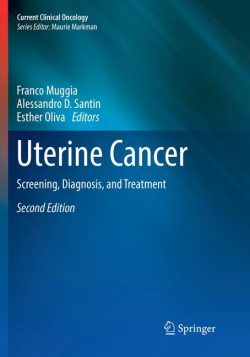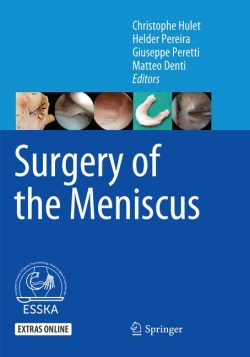This book offers a highly informative guide to interventional radiology such as arterial embolization and arterial balloon occlusion for the prevention of massive hemorrhage and management of cervical myomectomy and cesarean hysterectomy.
Recently, catheter intervention for hemostasis in obstetric patients has been increasingly used. Before myomectomy of large cervical leiomyoma or cesarean hysterectomy for placenta percreta with expected massive hemorrhage, a balloon occlusion catheter is inserted into arteries. In cesarean hysterectomy operations, ligation of internal iliac artery is not always effective in hemostasis of uterine bleeding: the success rate is about 40 -60%. Uterine blood flow during pregnancy is much different from that in non-pregnant women because large numbers of complicated collateral arteries develop during pregnancy, especially in patients with placenta previa. If the internal iliac artery and hypogastric artery are ligated, peripheral blood flow is still maintained, which causes intraoperative problems.
The authors argue that effective transcatheter balloon occlusion requires a detailed knowledge of blood flow in both pregnant and non-pregnant women. As such the book provides extensive, detailed anatomical figures and videos offer readers vivid insights into methods of intercepting the uterine blood supply and the surgical methods. The book offers a new and indispensable reference guide for all obstetricians, not only for residents, but also for experienced professionals. It is also a valuable resource for radiologists and radiological technicians and radiology specialists.
Chapter1. New applications of interventional radiology for prophylaxis of massive hemorrhage in obstetric and gynecologic fields.- Chapter2. Knowledge of the uterine blood supply and prevention of massive hemorrhage.- Chapter3. Application of the arterial embolization and the arterial balloon occlusion.- Chapter4. Myomectomy of the huge cervical leiomyoma and temporary interception of the uterine arteries.- Chapter5. Cesarean hysterectomy with the placenta percreta and temporary interception of the common iliac arteries or the abdominal aorta.
Satoru Takeda, M.D., Ph.D.
Department of Obstetrics & Gynecology,
Juntendo University, Faculty of Medicine,
Tokyo, Japan
Ryohei Kuwatsuru, M.D., Ph. D.
Department of Radiology,
Juntendo University, Faculty of Medicine,
Tokyo, Japan
This book offers a highly informative guide to interventional radiology such as arterial embolization and arterial balloon occlusion for the prevention of massive hemorrhage and management of cervical myomectomy and cesarean hysterectomy.
Recently, catheter intervention for hemostasis in obstetric patients has been increasingly used. Before myomectomy of large cervical leiomyoma or cesarean hysterectomy for placenta percreta with expected massive hemorrhage, a balloon occlusion catheter is inserted into arteries. In cesarean hysterectomy operations, ligation of internal iliac artery is not always effective in hemostasis of uterine bleeding: the success rate is about 40 -60%. Uterine blood flow during pregnancy is much different from that in non-pregnant women because large numbers of complicated collateral arteries develop during pregnancy, especially in patients with placenta previa. If the internal iliac artery and hypogastric artery are ligated, peripheral blood flow is still maintained, which causes intraoperative problems.
The authors argue that effective transcatheter balloon occlusion requires a detailed knowledge of blood flow in both pregnant and non-pregnant women. As such the book provides extensive, detailed anatomical figures and videos offer readers vivid insights into methods of intercepting the uterine blood supply and the surgical methods. The book offers a new and indispensable reference guide for all obstetricians, not only for residents, but also for experienced professionals. It is also a valuable resource for radiologists and radiological technicians and radiology specialists.
Presents a new and practical method for preventing massive hemorrhage
Includes a wealth of figures and videos for understanding the uterine blood supply
Will benefit obstetricians, radiologists, radiological technicians and radiology specialists
Presents a new and practical method for preventing massive hemorrhage
Includes a wealth of figures and videos for understanding the uterine blood supply
Will benefit obstetricians, radiologists, radiological technicians and radiology specialists





